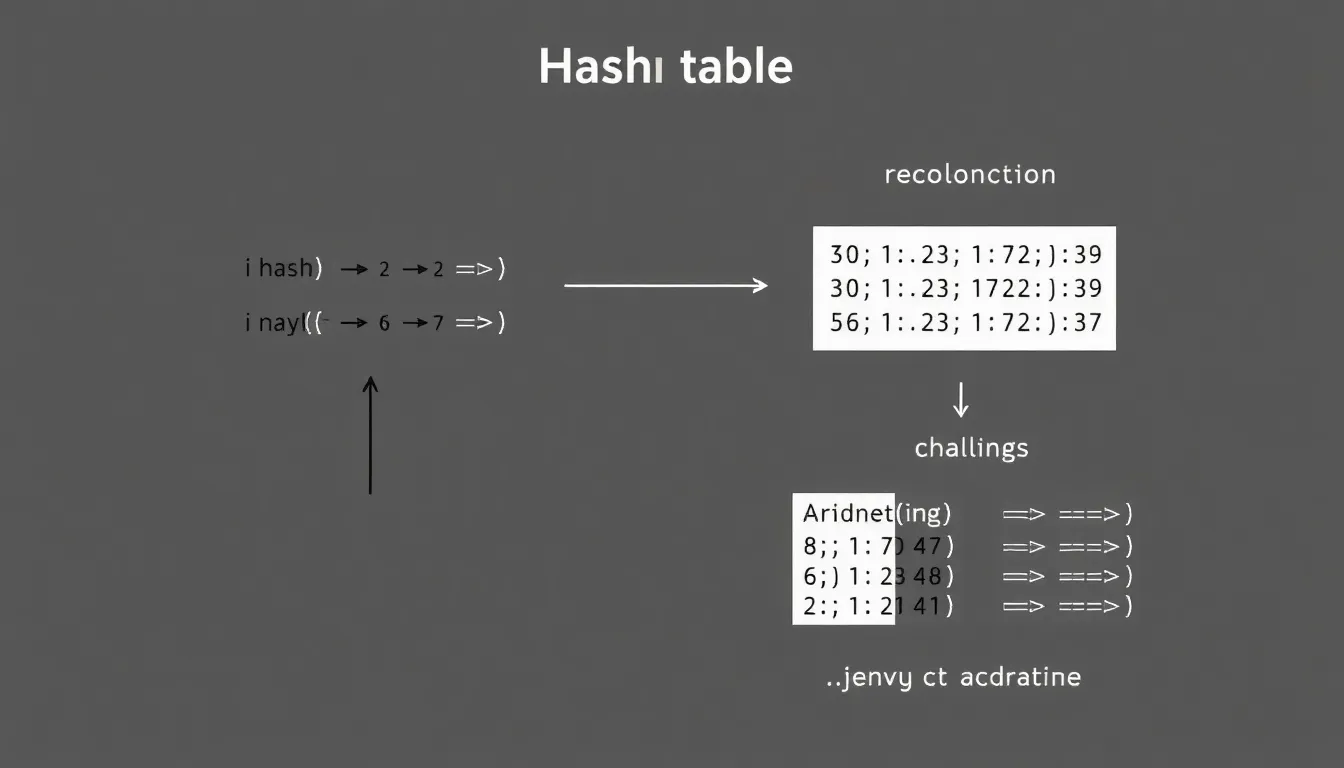In the world of data structures, hash tables are like the secret sauce that makes everything taste better. They’re not just a fancy way to store data; they’re the superheroes of efficient data retrieval. Imagine being able to find your favorite pair of socks in a messy drawer in seconds—now that’s the magic of hash tables!
Table of Contents
ToggleOverview Of Hash Table Implementation
Hash tables function as an efficient way to store data, providing quick access to information. Their implementation relies on an array and a hash function. The hash function converts keys into index values, determining where data is stored in the array.
Collision handling is critical in hash table implementation. When two keys generate the same index, techniques like chaining or open addressing resolve conflicts. Chaining involves linking entries at the same index, while open addressing searches for alternative slots within the array.
The load factor influences performance. It is calculated by dividing the number of entries by the size of the array. Maintaining a load factor below 0.7 ensures efficient access and minimizes collisions. When the load factor exceeds this threshold, resizing the array and rehashing the entries becomes necessary.
Insertions, deletions, and lookups derive from the hash table’s formula. Insertions utilize the hash function to find the correct index. Deletions require locating the index based on the key and, if necessary, managing collisions. Lookups involve applying the hash function to retrieve the desired value efficiently.
Performance varies based on implementation details. Average-case complexity for insertions, deletions, and lookups is O(1). However, the worst-case scenario can reach O(n) when many collisions occur. Optimizing hash table parameters, such as choosing a suitable hash function and managing load factors, enhances reliability and speed.
Strengths of hash tables include quick access and flexible storage. They excel in scenarios where rapid retrieval is essential, such as caching and indexing. Conciseness, combined with effective management, confirms the hash table’s role as a fundamental data structure in computer science.
Key Concepts In Hash Tables

Hash tables utilize crucial concepts that support their efficiency and effectiveness in data management. Understanding these principles lays the groundwork for mastering hash table implementation.
Hash Functions
Hash functions translate input data into a unique index in the hash table array. Every function takes a key and produces an integer, which helps determine the position of the data. Effective hash functions distribute data uniformly across the table to minimize collisions. A common example includes the modulo operator, which ensures values fit within the array’s bounds. High-quality hash functions exhibit properties like determinism and even distribution, which further optimize performance.
Collision Resolution
Collision resolution techniques address instances when multiple keys map to the same index. Chaining maintains a linked list at each index, allowing multiple entries without overwriting existing ones. Open addressing, on the other hand, finds the next available slot within the array when a collision occurs. Linear probing, quadratic probing, and double hashing represent different strategies in open addressing. Each method has advantages and varying efficiency, influencing the hash table’s overall performance. Understanding these techniques effectively manages data storage and retrieval in hash tables.
Types Of Hash Table Implementations
Various implementations of hash tables exist, each serving distinct purposes and use cases. Understanding these types enhances insight into their efficiency and application.
Separate Chaining
Separate chaining involves storing multiple entries in a single array index, using linked lists or other structures. When a collision occurs, the new entry simply joins the existing list at that index. This approach efficiently addresses overflow, as it allows multiple keys without losing data. While retrieval time remains fast, performance may decline if many collisions occur, leading to longer lists. Choosing this method often depends on load factors and average list lengths, with proper management ensuring optimal speed.
Open Addressing
Open addressing stores all entries directly within the array, seeking alternative slots upon collision. Several probing techniques exist, including linear probing, quadratic probing, and double hashing. Each technique modifies the index to find open slots, preventing adjacent clustering. Performance hinges on the load factor; keeping it below 0.7 allows for efficient operations. Open addressing offers simplicity and minimizes memory use, making it a popular choice for specific applications, though it can lead to performance degradation as the table fills.
Performance Considerations
Performance of hash tables hinges on various factors, primarily time and space complexities. Understanding these aspects helps in selecting optimal implementations.
Time Complexity
Time complexity for hash table operations generally appears efficient. Insertions, deletions, and lookups frequently exhibit average-case complexities of O(1). Although they remain constant time operations, worst-case scenarios may reach O(n) due to collisions. Collision handling techniques impact performance significantly. For instance, using chaining can maintain efficiency when load factors are low. Open addressing may struggle as the load factor increases, leading to longer search times during collision resolution. Balancing the load factor below 0.7 promotes faster operations and enhances overall performance. Ultimately, time complexity largely depends on hash function quality and collision resolution strategy.
Space Complexity
Space complexity relates directly to how hash tables manage memory. The primary memory usage comes from storing the hash table array and any linked lists for chaining. Each entry in the table requires a fixed amount of space. Space requirements increase with the number of entries and the size of the array utilized. In separate chaining, memory consumption rises with each collision as multiple entries can share the same array index. On the other hand, open addressing necessitates additional space for probing. Though higher load factors reduce wasted space, they can lead to inefficient memory usage. Thus, maintaining thoughtful space management ensures optimal performance in hash table implementations.
Hash tables stand out as powerful tools in data management thanks to their efficiency in data retrieval. By utilizing effective hash functions and collision resolution techniques, they ensure quick access to information while minimizing performance issues. Maintaining an optimal load factor is crucial for achieving the best results, allowing for seamless operations in various applications.
Their flexibility makes hash tables an excellent choice for scenarios that demand rapid data access such as caching and indexing. As technology advances and data grows, understanding and implementing hash tables will remain essential for developers and data scientists alike, solidifying their importance in the realm of computer science.






